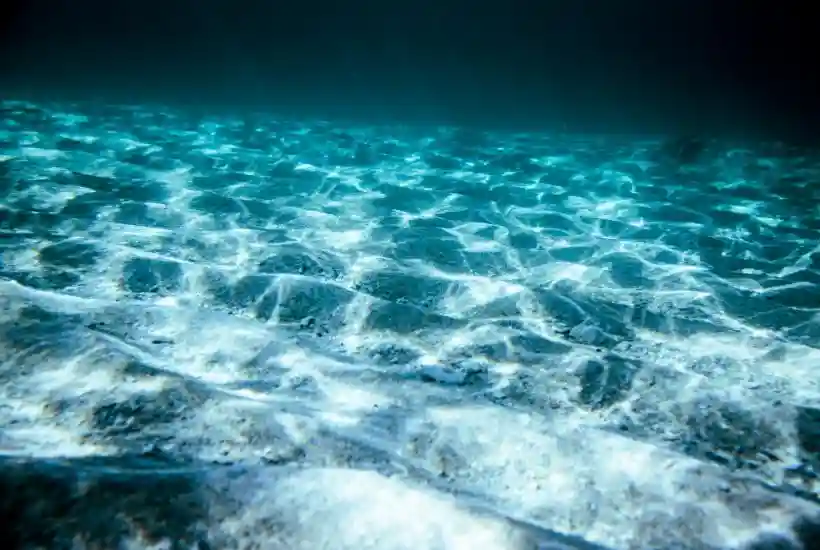As global temperatures rise, the effects go beyond beach vacations and hurricanes.
New research shows that ocean warming could be quietly transforming seafood into a source of dangerous toxins—even if mercury emissions don’t increase.
A study by Umeå University reveals that past climate shifts in the Black Sea triggered deadly compounds, a pattern that could repeat today.
When the Sea Stops Breathing
Thousands of years ago, the Black Sea experienced periods of deoxygenation—essentially, parts of the sea ran low on oxygen.
During these episodes, specific microbes converted harmless mercury into methylmercury, a neurotoxin that builds up in marine organisms.
“Methylmercury climbs the marine food chain and ends up on our plates,” says Andrei Ionescu, a researcher at Umeå University.
From plankton to small fish, and eventually to humans, the toxin accumulates with potentially serious health consequences.
Why Microbes Thrive in Low-Oxygen Zones
The bacteria responsible for methylmercury production flourish when oxygen is scarce.
Modern oceans are increasingly creating the same conditions as they warm and stratify, preventing deeper waters from mixing with surface layers.
This stagnant environment can give microbes the perfect opportunity to generate toxins.
Lessons From Ancient DNA
To understand the past, scientists examined ancient DNA from Black Sea sediments dating back 13,500 years.
They focused on the hgcA gene, which signals bacteria capable of producing methylmercury.
Analysis showed a clear spike in gene activity during periods of warming and low oxygen, particularly between 9000 and 5500 BCE.
“This natural experiment shows that dangerous chemical processes can occur without human interference,” explains Ionescu.
Key Findings From the Black Sea
The research highlighted how the Black Sea’s layered structure—oxygen-rich surfaces over oxygen-poor depths—created a laboratory for mercury methylation.
Different microbial species used various mechanisms to transform mercury, increasing the overall risk: the more species present, the higher the chance that toxins would form when oxygen levels dropped.
Modern Causes and Consequences
Today, human activity adds fuel to the fire. Industrial mercury emissions and nutrient runoff from agriculture lead to eutrophication, which depletes oxygen in coastal waters.
Climate change worsens the situation by warming the water and creating more stratified zones, giving microbes a free hand.
Because methylmercury doesn’t dissolve or settle, it travels up the food chain.
Large predatory fish, like tuna and swordfish, accumulate high levels, which can then be passed to humans.
“Just oxygen loss from climate change is enough for the sea to start producing methylmercury,” says Ionescu.
Comparing Past and Present
| Period | Cause of Deoxygenation | Main Result | Consequences |
|---|---|---|---|
| 9000–5500 years ago | Warming and water stratification | Growth of mercury-methylating microbes | Increased ecosystem toxicity |
| Today | Ocean warming, eutrophication, pollution | Expansion of low-oxygen zones | Methylmercury accumulation in fish |
Practical Steps to Reduce Risk
-
Cut mercury emissions from energy and industrial sectors.
-
Control fertilizer and industrial runoff to prevent algal blooms.
-
Monitor seafood and favor small fish or farmed species.
-
Support engineering projects that restore water circulation in enclosed seas.
-
Develop monitoring systems for microbes and oxygen levels.
Avoiding Errors That Heighten Danger
Ignoring hypoxic zones in coastal areas allows toxins to build and damages fisheries.
Installing oxygen sensors and regularly updating biochemical data can prevent this.
Focusing only on mercury emissions isn’t enough either.
Without tackling warming and nutrient runoff, methylmercury production will continue.
The solution requires addressing climate change and eutrophication simultaneously.
A Clear Warning From the Past
The Black Sea offers a chilling lesson: the ocean itself can create hazards when pushed out of balance.
As global temperatures rise, careful monitoring, proactive management, and climate action are more crucial than ever to keep seafood—and humans—safe.
Share on Facebook «||» Share on Twitter «||» Share on Reddit «||» Share on LinkedIn